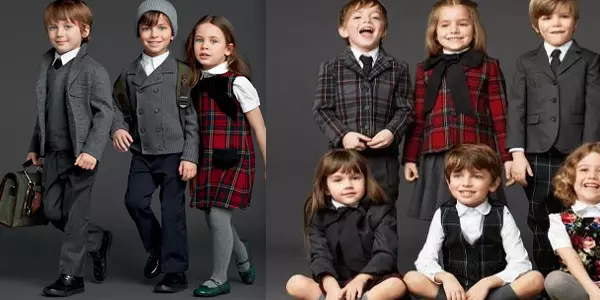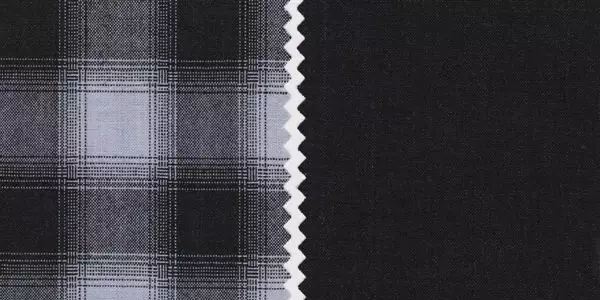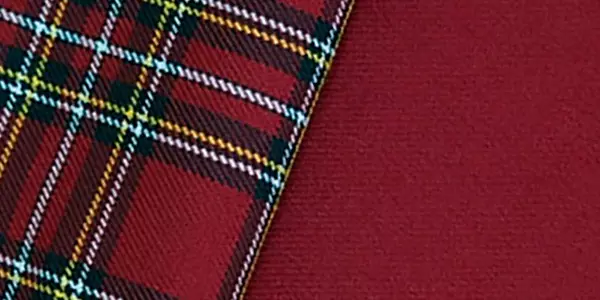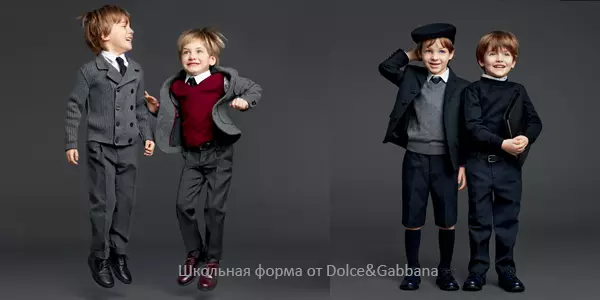Caring for the choice of school uniforms and problems for the care of Uza is well acquainted with each family in which children grow up.
School suites, skirts, sundresses, blouses and shirts are constantly undergoing intensive loads, especially among active children. This cost of expenses constitute a noticeable part of the home budget, and they largely depend on how long school things will keep a worthy view.

What should be the form?
Requirements that are presented to children's clothing can be divided into several directions:- Hygienicity. Material for children's clothing must provide air circulation, thermoregulation, absorb sweat, do not irritate the skin and be comfortable when touched.
- Strength and elasticity. Children are actively moving, so for school clothes it is necessary to choose a cloth with sufficient elasticity, which ensure freedom of movements, resistant to wear, breaks, tightening threads. However, since schoolchildren spend a lot of time in the sitting position, their clothes should not stretch and deform, which is especially important for school trousers and jackets.
- Ease of care. Children's things are easily polluted, so they should be easily repurchased and, if possible, to wear, sit down little and quickly irrigible.
The range of "school" fabrics is quite large, and replenished with each season. Often, manufacturers give different names with similar materials, and it is not so easy to figure it out.
By purchasing uniforms for your child, it is necessary to ask what kind of raw material is made, and whether the corresponding certificate has.
This is especially true of products directly in contact with the body (shirts, blouses, etc.). For costumes and sundresses, be sure to check their density (on the lumen) and ask the rules for leaving the label.
Natural or synthetic?

It is believed that natural materials are most preferable for children's clothing. . It is really so - cotton and wool have excellent breathability, help to adjust the temperature of the body surface, and finally, they are hypoallergenic. You can use such types of natural fabrics:
- Calica, satin, cotton poplin, Madapolam, Batist (for blouses and shirts);
- Cotton knitwear with flavored and without it (for golf, t-shirts, sports costumes);
- Cotton fabrics, such as velveteen, fully, twill, etc. (for jackets, trousers, skirts, sundresses, vests);
Article on the topic: Chandelier do it yourself - how to paint a chandelier
Purely costume suit fabrics

With all the advantages of natural fibers should not be forgotten about their disadvantages.
- Cotton fabrics give a shrinkage when washing, and woolen things when dirt will have to be given in dry cleaning.
- Cotton and wool are easily frozen, and their ironing requires precautions.
- Finally, most of these materials are quite expensive.
Modern technologies for the production of blended materials allow you to preserve all the best properties of cotton and wool, and at the same time significantly improve such characteristics as:
- cost;
- strength;
- failure and elasticity;
- Easy washing and ironing.
Adding a total of 5% Lycra to knitwear protects it from deformation and allows you to achieve felting. Polyester in porch and costume tissues makes them uninteaded and makes it possible to form stable folds and pleated. As a rule, in mixed materials, the content of synthetic fibers varies from 40% to 60%. For school uniforms, most often use:

- Gabardine having a dense surface into a rutter, lowered and not subject to deformation;
- Pikachu is a diagonal interlacing tissue with the addition of elastane, which is well stretched and allows you to achieve freedom of movements in the knocked rod;
- The plaid plaid in which woolen (cotton) threads form relief weave with synthetic fibers.
Well passed check time and costume school cloth from viscose and polyester (or elastane). This is one of the most budget and practical materials that can have different textures and is issued under different names ("School", "Velur", "Gabardine", etc.)
